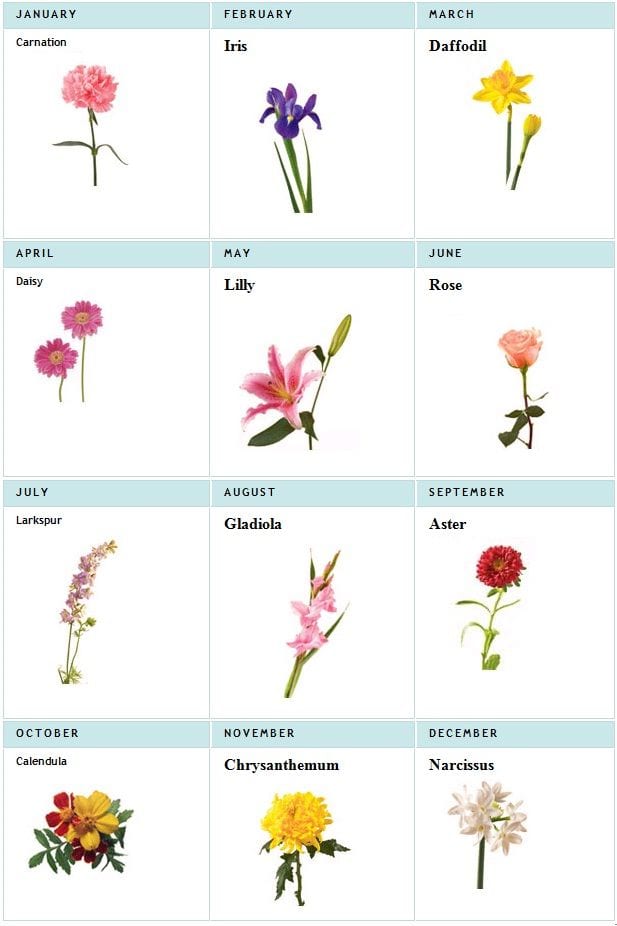Discover the Magic of Birth Flowers by Date: A Parent’s Guide
Hey there, lovely parents! ? Are you eager to sprinkle a little extra magic on your little one’s life journey? Then you’re in for a treat! Birth flowers, much like astrology or birthstones, offer a delightful way to celebrate and symbolize each month of the year. They carry with them unique meanings, histories, and a natural charm that can add a personal touch to gifts, celebrations, and precious memories.
Whether you’re planning a baby shower, a birthday celebration, or simply want to add a touch of nature’s whimsy to your child’s room, knowing their birth flower can be as enriching as it is fun. Let’s explore the world of birth flowers together and discover how each bloom can hold a special significance for your little one!
Discover Each Month’s Birth Flower and Its Meaning
Every month has a unique flower associated with it, and below is a handy chart that will guide you through each one. Find your child’s birth month and see what flower they are paired with and what enchanting meaning it holds:
| Birth Month | Birth Flower | Meaning |
|---|---|---|
| January | Carnation | Love, fascination, distinction |
| February | Violet | Loyalty, faithfulness, wisdom |
We’ve captured the essence of each month’s blossom below in more detail. So let’s dive into these petal-perfect powers!
January’s Child: Carnation
Bundled up in chilly January, the carnation stands out with its ruffled petals and sweet fragrance. It’s the perfect emblem of a love as deep as the winter is long. The carnation comes in a rainbow of colors, each with its own significance, from pure white symbolizing pure love, to fiery red declaring admiration and deep passion. For the January born, these flowers are a testament to their inherent charm and captivating presence.
February’s Bloom: Violet
Violets personify the steadfastness and purity of February folks. This diminutive yet striking flower, with its vibrant purple hues and heart-shaped leaves, symbolizes the loyalty, humility, and deep spiritual wisdom that lies within. The violet’s scent, subtle and inviting, also evokes a sense of enduring love—a perfect fit for friendships and family ties.
As you read on, you’ll find each month lovingly detailed and imbued with both folklore and facts. From the dainty daisy to the stately gladiolus, this guide will prepare you to revel in each moment of your child’s life, with a floral tale to tell alongside those milestones.
So, whether it’s for memory keepsakes, nurturing a garden as your child grows, or simply for an enchanting story, in the blooming world of birth flowers, every petal holds a promise of beauty and insight. Keep reading to discover more about the birth flowers that accompany spring’s bloom, summer’s warmth, autumn’s bounty, and winter’s solace. You’re creating not just moments, but a vibrant bouquet of memories for your child—how absolutely beautiful! ?

5 Parental Petal Pointers: Prepping for Your Child’s Birth Flower
Before you embark on this botanical adventure, here are five petal-perfect tips to guide you as you weave the enchantment of birth flowers into your child’s story:
1. Personalize with Purpose
Understanding the symbolism behind your child’s birth flower allows you to infuse personalization into gifts and décor with greater intent. For example, if your child is born in September, consider adding asters to their nursery—symbols of wisdom and love. It’s a way to celebrate their unique arrival while blessing them with the flower’s represented qualities.
2. Engage in Garden Bonding
Planting a birth flower together can be a wonderful bonding experience and a practical, hands-on way to teach your child about nature. Watching the flower bloom as your child grows can serve as a lovely metaphor for life and nurture a lifelong appreciation for the natural world.
3. Create a Year-Round Celebration
Don’t limit the celebration of birth flowers to birthdays. Each season brings a new opportunity to acknowledge your child’s growth and achievements. Gather seasonal blooms to cultivate a living tapestry, emblematic of your child’s unfolding journey.
4. Make Education Fun
Beyond the allure and aesthetics, each birth flower has an intriguing history. Share these fun facts with your child to foster curiosity. Did you know the marigold of October is also known as the “Herb of the Sun” and is believed to possess magical powers in folklore? Education can bloom alongside your garden!
5. Birth Flowers as Heirlooms
Consider birth flower-themed keepsakes such as jewelry or artwork. These can become treasured heirlooms passed down through generations. They’re not only a celebration of birth but also an enduring way to connect with family heritage and stories.
March’s Darling: Daffodil
Frolicking into March, the daffodil is a cheerful symbol of new beginnings and rebirth, echoing the onset of spring. Its sunny disposition reflects the March-born’s optimistic spirit and innate liveliness. Utilize daffodils to infuse your home with brightness, especially for a nursery that radiates positivity!
April Showers Bring: Daisy
Innocence and purity shine through the daisy for those born in April. With its simplistic beauty and playful aura, the daisy is the perfect emblem for the youthful joy and infectious laughter that April babies often bring into the world. A daisy-themed birthday party or a simple bouquet can be sheer delight for the senses.
See more great Things to Do with Kids in New Zealand here. For more information see here
Disclaimer
The articles available via our website provide general information only and we strongly urge readers to exercise caution and conduct their own thorough research and fact-checking. The information presented should not be taken as absolute truth, and, to the maximum extent permitted by law, we will not be held liable for any inaccuracies or errors in the content. It is essential for individuals to independently verify and validate the information before making any decisions or taking any actions based on the articles.




